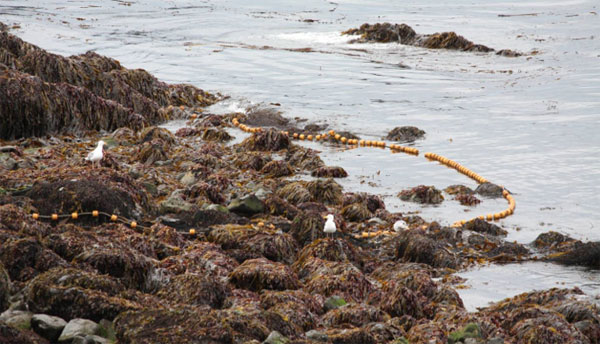Unit 2: Beaches & Tidal Zones
There is a great diversity of habitats, organisms and cultures throughout Alaska and in the Chugach Region.
Lesson Plan 1 – Solar/Lunar Changes on Our Beaches

Summary: Chugach tribes lived on the coasts of Alaska’s Gulf for thousands of years and it is important to understand and respect the tides. Students will also measure tides and study how tides are formed.
Grade Level:
K-4, 5-8, 9-12
Time required:
Five-ten class periods of 45 minutes
Materials needed:
• Poster board
• Butcher paper
• Markers, colored pencils, other art materials
• Science Journals
• Digital camera
• Recording device
• Computer and internet access
Learning objectives:
• Students will create a presentation explaining the forces that cause and affect tides in the Gulf of Alaska.
• Students will describe how tides affect their lives and explain the importance of observing tides.
• Students will distinguish variations in tidal patterns and water levels on the coast and discuss the conditions that have influenced the variations.
Vocabulary introduced:
Lunar tides, gravitational forces, neap tides, fluctuate, centrifugal force, diversity
National Science Education Standards:
Earth and Space Science
Content Standard D: As a result of their activities in grades K-4, all students should develop an understanding of the following:
• Properties of earth materials
• Objects in the sky
• Changes in earth and sky
Content Standard D: As a result of their activities in grades 5-8, all students should develop an understanding of the following:
• Structure of the earth system
• Earth’s history
• Earth in the solar system
Content Standard D: As a result of their activities in grades 9-12, all students should develop an understanding of the following:
• Energy in the earth system
• Geochemical cycles
• Origin and evolution of the earth system
• Origin and evolution of the universe
Alaska Science Standards:
Concepts of Earth Science
A student should understand and be able to apply the concepts, processes, theories, models, and evidence, and systems of earth and space sciences.
A student who meets the content standard should be able to develop the following:
• An understanding of Earth’s geochemical cycles;
• An understanding of the origins, ongoing processes, and forces that shape the structure, composition, and physical history of the Earth;
• An understanding of the cyclical changes controlled by energy from the sun and by Earth’s position and motion in our solar system; and
• An understanding of the theories regarding the origin and evolution of the universe.
Background Information:
The teacher will have to take notice of the natural environment in the school area, information on the local tides, and the organisms that are gathered in the area during local tides.
Find out if there are local beliefs regarding the water or legends that have been told to share with the students.
Meet the elders/cultural bearers prior to their visit to the classroom so they understand what you would like them to share and let them become familiar with the classroom.
Have water or tea for the elder/cultural bearer to drink during their visit to the classroom.
Review social expectations with the class prior to the guest speaker (sitting respectfully listening to stories, waiting until the speaker has finished talking before asking questions, offering assistance/escorting when the speaker is leaving).
Have a small gift of thanks for the guest (something made by the class, or a card, and follow with a letter from the students).
Local Story
|
MOVING ISLAND (as told by Herman Moonin Sr. in the Chugach Legends) “There is an island someplace in the Kachemak Bay. The old timers had a village in front of the sea. They wanted to see farther out to the sea than they could. The men had a lot of Aleut boats. They tied these bidarkies up to the rocks and on the trees all in a row. I think they used kelp for ropes or sinew. Then they tried to tow the island farther away from the village so they could see farther out. The men kept it up all day. The tide was turning. It was going out and you could see the ripples. The people thought they were moving the island. The men would yell, “The island is moving now.” They were not really moving, but they kept on towing the whole day. They still couldn’t move the island. The island is still there as far as I know.”
|
 Listen to the Audio version of the story recorded with Herman Moonin.
Listen to the Audio version of the story recorded with Herman Moonin.
Resources: Alutiiq Words
Tide Related Terms
| Tide pools | mecak, nanualiwat |
| Tide comes in | tung’irluni |
| Tide goes out | kenlluni |
| Low tide | ken’aq |
| High tide | tung’iq |
| Ebb tide | naterneq |
| Neap tide | |
| Sun | macaq |
| Sun is shining | Macarluni |
| Moon | tanqik |
| Moon is shining | tanqilirceslluni |
| Beach | quta |
(From Nanwalegmiut Paluwigmiut-llu Nupugnerit – Conversational Alutiiq Dictionary, Kenai Peninsula Alutiiq by Jeff Leer, 1978)
Resources: Literature, audio, video, other curriculum
Literature
• Baird, Steve. Map of the Lower Kenai Peninsula (from Imam Cimiuca). 2011. (In the Document Library)
• COSEE/Dick, Alan. Dealing With Accelerating Change. Chapter: Measuring the Tides. 2010.
• Darwin, George H. The Scientific Papers of Sir George Darwin: Oceanic Tides and Lunar Disturbance of Gravity. 1907.
• Endreyus, Klaus P. Moon Rhythms in Nature: How Lunar Cycles Affect Living Organisms. 2003.
• Garza, Dolly. Tlingit Moon and Tides. 1999. Available online: http://www.ankn.uaf.edu/curriculum/Tlingit/Salmon/graphics/moonandtides.pdf
• Pugh, D.T. Changing Sea Levels: Effects of Tides, Weather and Climate. 2004.
Video
• Tides video: https://www.youtube.com/watch?v=5ohDG7RqQ9I
• Tides video: https://www.youtube.com/watch?v=JQmgttClZCc
• Changing Tides: http://www.iqsak.org/images/video/ChangingTheTides.wmv
• Raven and the Owner of the High Tides: http://www.iqsak.org/images/video/RavenandtheownerofthehightidesMovie.wmv
• Byers and Sigman. Life on the Beach : Among Friends and Anemones. 2004. Alaska Sea Grant.
Other Curriculum
• Alaska Seas and Rivers Curriculum/Waves and Tides. Available online: http://seagrant.uaf.edu/marine-ed/curriculum/grade-7/investigation-3.html?task=view
SmartBoard
• Life in a Tide Pool. This lesson focuses on the animals living in a tide pool. (1-2) http://exchange.smarttech.com/details.html?id=3a389119-b3bb-4b71-8732-b7b30f251035
• Solar System. Presentation on the Sun and planets. (3) http://exchange.smarttech.com/details.html?id=d838a129-659a-4a3e-981f-76729b5ab516
• Solar System. Students will learn about the solar system and identify the planets through various activities. (2-5). http://exchange.smarttech.com/details.html?id=c47e5dee-b4b7-4d5b-a757-0d84664571f8
Procedure:
Engagement
• Show posters and diagrams of tidal activity and discuss.
• Share the local stories with the class.
• Discuss the story and how it relates to the class today.
• Show the video: http://video.nationalgeographic.com/video/kids/animals-pets-kids/invertebrates-kids/crab-sandbubbler-kids/
• Discuss what was observed in the video. Ask students if they have ever been to the beach at low tide, and then share what they have observed.
• Have students fill out a KWL chart on what we know about tides. Refer back to this chart daily to update what they are learning.
Exploration
• Take students on a visit of a beach on low tide and at high tide. Allow students time to observe the high water mark and measure the distance to water, notice what organisms appear and what they do, direct them to record their observations in their journals. This will take more than one visit to observe the tide.
Explanation
• Have students share important concepts and observations that they have learned about the relationship that Alaska Natives have with inter tidal organisms with members of their class.
• Introduce the vocabulary and discuss the definitions. Include the Indigenous words in this section.
• A discussion about the important relationship that tribes have with inter tidal organisms will help to re-enforce important concepts.
Elaboration
• Direct students to brainstorm a list of community members they could interview about the effects of the tides on the region and the people that live there.
• Interview family or community members. Discuss the appropriate way to conduct an interview and the tools needed to keep the information from the interview.
• Create a presentation explaining the forces that cause and effect tides in the Gulf of Alaska.
• Write a scientific report on how the tides affect the lives of the people living in the Gulf of Alaska, including tide observations, interview facts/comments.
Evaluation
• Observe students as they are discussing the importance of coasts and tides among themselves.
• Analyze student journals for comprehension of the lesson and theme.
• Students will create a presentation (poster, movie, PowerPoint, etc) explaining the forces that cause and effect tides in the Gulf of Alaska.
• Students will write a report on how tides affect their lives explaining the importance of observing tides and being aware of the tides and how they influence the life of the tribes within the Chugach Region.
Follow Up Activities:
• Fill out the seasonal species harvest table with community elders and the students. Find out the local, common and scientific names of the species.
• Clean up local beaches of trash. Invite the whole community to participate in this.
• Create an art collage with the students from objects found on the beach. Identify the materials whether they are natural or non-natural.
• Continue to track the tides at local beaches and determine how they affect the success of fishing.
• Tidal bores – what are they and where can you see them? (Cook/Turnagain Inlet)
